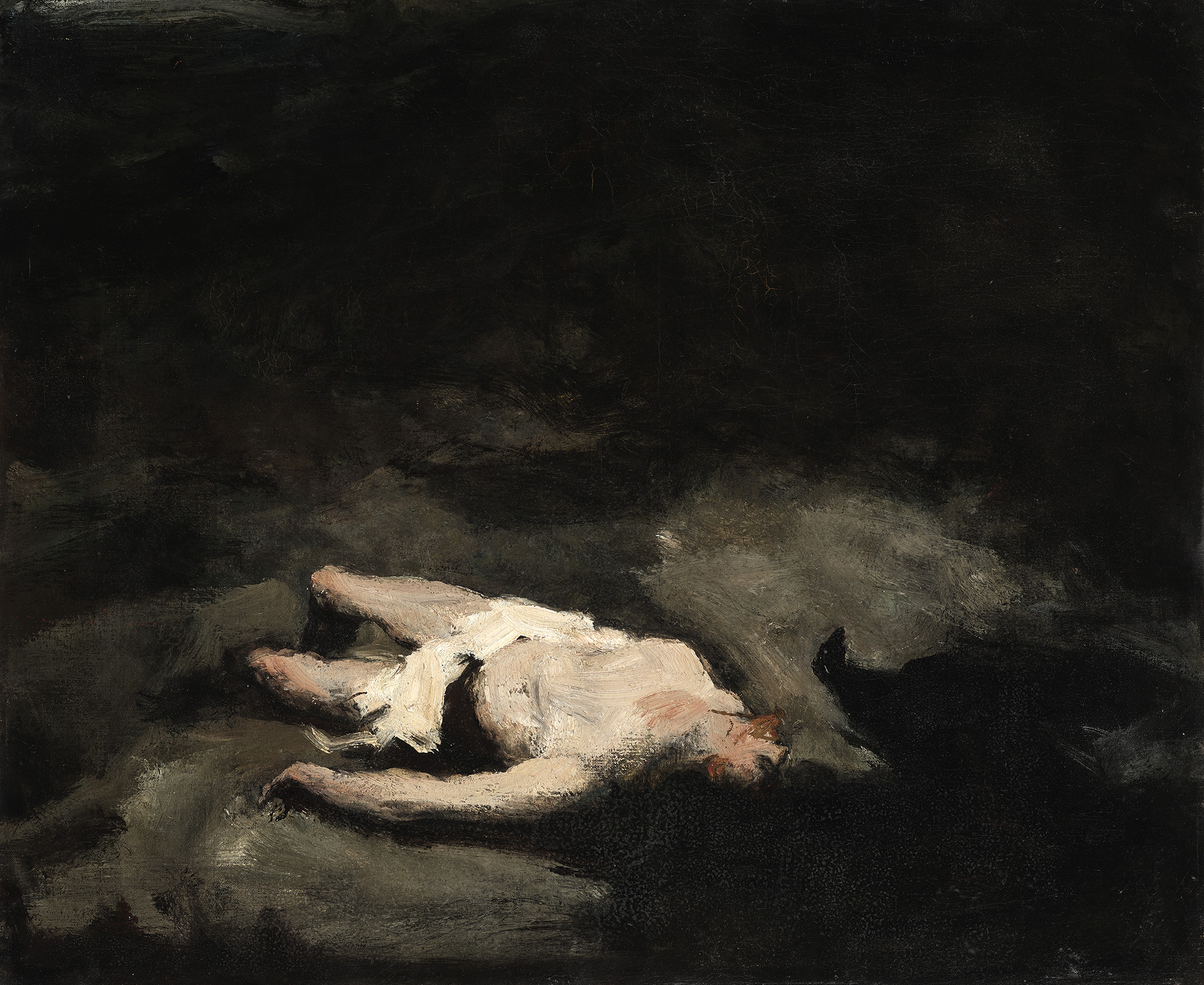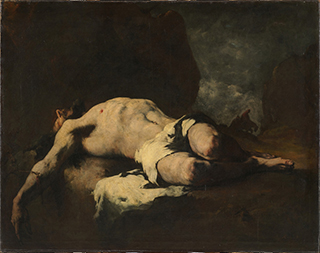Ribot approached religious and mythological subjects with his idiosyncratic truthful and humanistic perspective. Our Saint Vincent depicts the martyr after torture, his dead body abandoned and exposed on the ground while a crow stands guard to protect it from desecration. Chiaroscuro heightens the heavy reality of suffering and mortality.
Our painting is a preparatory study for larger versions of Saint Vincent, one held now in the Palais des Beaux-Arts de Lille (fig. 1), and the other in the Musée de Blois. The final work is among Ribot’s most rigorous and stripped-down compositions: its monochromatic palette recalls his washes and etchings, while the scale clearly signals its ambition as a Salon piece.
In our study, Ribot interprets the Legenda Aurea and the account of the martyrdom of Saint Vincent of Saragossa, tortured under Diocletian in 304.1 Thrown into a ravine without burial, the deacon’s body was said to have been protected by a crow that kept predators at bay. The face is not shown, nor is there a halo, only an abandoned corpse. The liquid brushstrokes, blurred outlines, and intense strokes of paint enhance the sense of anonymity and dissolution, drawing on Baroque precedents while affirming Ribot’s own vision.
A preparatory drawing for the same composition is also preserved at the Musée d’Autun, further underlining the importance that Ribot placed on this subject. In this mature work Ribot’s personal style is fully present, a style that would also shape his creation, in 1870, of the solitary version of The Good Samaritan (fig. 2) now in the Musée d’Orsay.
1 Lobstein, D., 2019, Théodule Ribot (1823-1891), p. 125.

